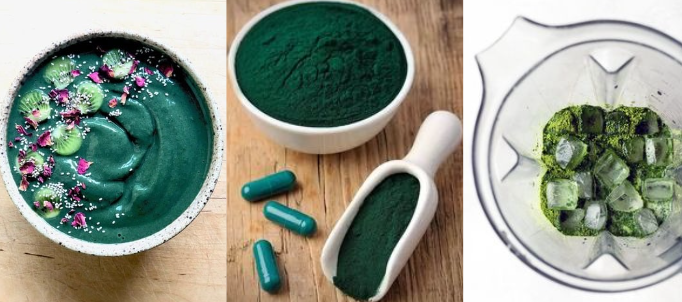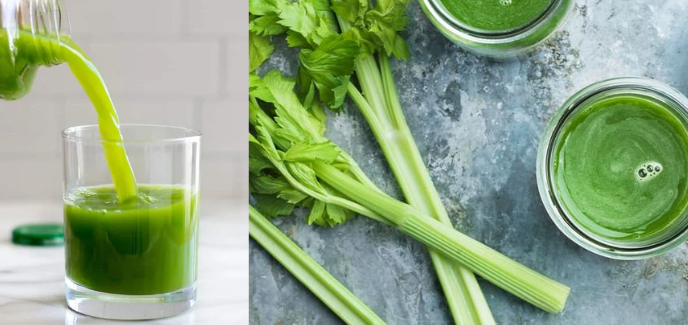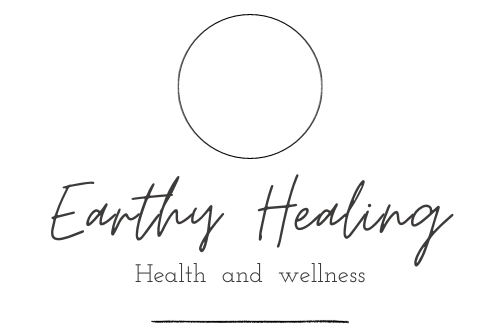Author: Enya Alford
Coriander: A Culinary Herb with Remarkable Healing Properties

Introduction:
Coriander, also known as coriander leaves, is a culinary herb cherished for its aromatic flavor in various global cuisines and valued for its impressive array of health benefits. This versatile herb is rich in essential vitamins and minerals and has been used in traditional medicine practices around the world to treat a variety of health issues. This article will delve into the health benefits of coriander, explore its nutritional content, and provide tips on how to incorporate it into your daily diet.
What is Coriander?
Coriander refers to the fresh leaves of the Coriandrum sativum plant, which belongs to the Apiaceae family. The term “coriander” is commonly used in many parts of the world to describe both the leaves and seeds of the plant, each part offering unique flavors and benefits.
Nutritional Profile of Coriander
Coriander is low in calories but packed with nutritional benefits. It includes:
- Vitamins: A rich source of vitamin A, C, and K.
- Minerals: Contains potassium, iron, and calcium.
- Antioxidants: Provides flavonoids and phenolic compounds that help fight free radicals in the body.
Health Benefits of Coriander
- Detoxification Properties: Coriander has been shown to bind to heavy metals like lead, mercury, and arsenic, helping remove them from the body. This makes it beneficial for detoxification programs.
- Antioxidant Effects: The antioxidants in coriander help reduce oxidative stress, which is linked to a variety of chronic diseases including heart disease, cancers, and neurodegenerative disorders.
- Anti-inflammatory Benefits: Coriander can help reduce inflammation in the body, which is beneficial for conditions such as arthritis and cardiovascular diseases.
- Digestive Health: Coriander is known for its digestive benefits, as it helps produce digestive enzymes that aid in the breakdown of foods.
- Antibacterial Properties: Some studies suggest that coriander oil has antibacterial properties that can effectively fight certain infections and foodborne pathogens.
Incorporating Coriander into Your Diet
- As a Garnish: Fresh coriander leaves are a popular garnish on dishes such as soups, tacos, and curries.
- In Smoothies: Blend a handful of coriander into your green smoothies for a nutrient boost.
- Herb Pesto: Use coriander as the main herb in a pesto sauce, which can be used with pasta or as a spread.
- Salads: Chop coriander and add it to salads for a burst of flavor.
Safety and Considerations
While coriander is generally safe for consumption, some individuals may experience an allergic reaction or sensitivity to the herb, which can cause gastrointestinal discomfort. Additionally, some people may find the flavor of coriander to be unpleasant, often describing it as soapy. This reaction is believed to be linked to a genetic trait.
Conclusion:
Coriander is more than just a flavorful addition to meals—it is a powerful herb with significant health-promoting properties. Whether used to detoxify the body, boost antioxidant intake, reduce inflammation, aid digestion, or combat bacteria, incorporating coriander into your diet can provide numerous health benefits, making it a valuable component of a balanced diet.
Spirulina: The Superfood Algae That Packs a Nutritional Punch

Introduction:
Spirulina, a type of blue-green algae, is gaining attention worldwide as a potent superfood. With a history dating back to the Aztecs, who consumed it for its remarkable health benefits, spirulina is celebrated today for its dense nutrient profile and various health-promoting properties. This article explores the benefits of spirulina, its nutritional content, potential health impacts, and how to safely incorporate it into your diet.
What is Spirulina?
Spirulina is a biomass of cyanobacteria (blue-green algae) that can be consumed by humans and animals. Typically found in powder or tablet form, spirulina thrives in both fresh and salt water. It is primarily harvested from non-contaminated ponds and bodies of water, making it a sustainable superfood option.
Nutritional Profile of Spirulina
Spirulina is renowned for its high concentration of nutrients, including:
- Protein: It contains all essential amino acids, making it an excellent protein source, especially for vegetarians.
- Vitamins: Rich in vitamins B1, B2, B3, B6, and B9, as well as vitamin A, C, D, and E.
- Minerals: Provides a wealth of minerals such as iron, potassium, magnesium, and calcium.
- Antioxidants: Contains powerful antioxidants like phycocyanin, which may reduce inflammation and decrease the risk of chronic diseases.
Health Benefits of Spirulina
- Boosts Immune System: Spirulina is known to enhance immune function, helping to ward off infections and illnesses.
- Supports Cardiovascular Health: The antioxidants and anti-inflammatory properties of spirulina can help reduce blood pressure, lower cholesterol levels, and prevent atherosclerosis.
- Enhances Energy and Stamina: The rich nutrient blend in spirulina can boost metabolism and increase energy levels, making it popular among athletes.
- Detoxifies the Body: Spirulina has a high chlorophyll content, which is effective in detoxifying the body by binding to heavy metals and removing them.
- Supports Mental Health: Some studies suggest that spirulina can improve brain function and help in managing mental health issues such as depression and anxiety.
Incorporating Spirulina into Your Diet
- As a Supplement: Add spirulina powder to smoothies, juices, or water for a quick nutritional boost.
- In Foods: Sprinkle spirulina powder on salads or mix into soups and dips for added nutrients.
- Dosage: The recommended daily intake typically ranges from 1-3 grams but can vary based on individual health needs. Always start with a small dose to assess tolerance.
Safety and Considerations
While spirulina is safe for most people, it is crucial to source it from reputable suppliers to avoid contaminated products that could contain harmful bacteria or heavy metals. Individuals with autoimmune diseases, such as rheumatoid arthritis or multiple sclerosis, should consult with a healthcare provider before taking spirulina, as it could stimulate the immune system and exacerbate symptoms.
Conclusion:
Spirulina is a versatile superfood that offers extensive health benefits, from boosting the immune system and enhancing energy levels to supporting cardiovascular and mental health. By incorporating high-quality spirulina into your diet, you can tap into its myriad of nutrients and promote a healthier, more vibrant life.
Embracing Nature Grounding: Harnessing Earth’s Energy for Health

Introduction:
Nature grounding, also known as “earthing,” involves direct skin contact with the surface of the Earth, such as barefoot walking on grass. This practice is based on the idea that connecting to the Earth’s natural charge can yield numerous health benefits, from reducing inflammation and improving sleep to enhancing well-being. Recent scientific research supports the therapeutic effects of grounding, providing a fascinating insight into how reconnecting with our planet can improve human health.
What is Nature Grounding?
Nature grounding is the practice of making contact with the Earth’s surface electrons by walking barefoot outside or sitting, working, or sleeping outdoors that are conductive systems. The Earth maintains a negative electrical potential on its surface. When you are in direct contact with the ground (walking, sitting, or lying down on the Earth’s surface), the earth’s electrons are conducted to your body, bringing it to the same electrical potential as the earth.
Health Benefits of Nature Grounding
- Reduction of Inflammation: Studies have shown that grounding can reduce inflammation in the body, which is often a cause of numerous chronic diseases.
- Improvement in Sleep: Connecting with the Earth’s natural energy can help improve sleep patterns by normalizing the day-night rhythm of the stress hormone cortisol.
- Decrease in Stress Levels: Grounding has been found to alter the electrical activity of the brain, as shown in EEG results, fostering a calming effect.
- Enhancement of Cardiovascular Health: Research suggests grounding can improve blood flow and viscosity, which in turn can boost cardiovascular health.
- Boost in Immunity: By reducing inflammation and stress, grounding can strengthen the immune response.
Implementing Nature Grounding in Your Routine
- Start Small: Begin by walking barefoot on natural surfaces such as grass, soil, or sand for at least 30 minutes daily.
- Use Grounding Equipment: For those who cannot regularly make direct contact with the ground, consider grounding mats, sheets, or socks that can be used indoors to similar effect.
- Combine with Meditation or Yoga: Incorporate grounding into your yoga or meditation practice by doing these activities outside, directly on the Earth.
Safety and Considerations
Grounding is generally safe for most individuals. However, it’s important to consider:
- Environment: Choose environments that are clean and free from potential hazards such as broken glass or harmful objects.
- Weather Conditions: Avoid grounding in extreme weather conditions that could pose risks, such as lightning storms or extreme cold.
- Individual Health Conditions: People with conditions that affect their ability to regulate blood electrolytes, such as those with kidney disease, should consult with a healthcare provider before starting grounding practices.
Conclusion:
Nature grounding is a simple, powerful, and cost-effective way to enhance health and well-being by tapping into the Earth’s natural energy. As more people seek holistic approaches to health care, grounding offers an accessible solution to reduce stress, improve cardiovascular health, boost immunity, and support overall wellness. Whether in a park, your backyard, or at a local beach, taking the time to connect with the Earth could be a key to unlocking better health and increased vitality.
Cold Showers: A Cool Path to Enhanced Health and Vitality

Introduction:
Taking cold showers might seem like a daunting practice reserved for the brave or the few, but this simple habit can offer substantial health benefits. From improving circulation and skin health to boosting mood and immunity, the advantages of cold showers are supported by both historical practices and contemporary research. This article delves into the potential health benefits of taking cold showers and provides insights on how to incorporate them into your daily routine for optimal well-being.
What are Cold Showers?
A cold shower involves bathing in water at a lower temperature than usual, typically below 70°F (21°C). While it may be uncomfortable at first, cold showers can become an invigorating part of one’s daily hygiene routine.
Health Benefits of Cold Showers
- Enhanced Circulation: Cold water causes blood to move to your organs to keep them warm. This stimulation of the circulatory system is great for overall cardiovascular health.
- Reduced Muscle Soreness: Cold showers are often used by athletes to reduce muscle soreness after intense workouts. The cold water helps decrease inflammation and accelerate recovery.
- Improved Skin and Hair Health: Cold water can tighten pores, which may prevent them from getting clogged. It can also seal the cuticles in the skin and scalp, potentially reducing dirt buildup and promoting shiny hair.
- Boosted Mood and Energy: Cold showers can increase endorphin levels, often referred to as feel-good hormones, which can create a more robust mood and an increase in energy levels.
- Strengthened Immunity: Research suggests that taking cold showers can increase the number of white blood cells in your body. These cells protect your body against diseases, potentially boosting your immune system.
- Enhanced Metabolic Rate: Exposure to cold can activate brown fat, which burns more calories to help maintain body temperature, thereby increasing metabolic rate and aiding in weight loss.
How to Start Taking Cold Showers
Incorporating cold showers into your routine can be done gradually:
- Start Slow: Begin with a warm shower and at the end of your shower, turn down the temperature to cool or cold for the last 30 seconds to one minute.
- Increase Gradually: As you become more accustomed to the shock of cold water, gradually increase the duration and decrease the water temperature.
- Consistency is Key: Regular exposure is essential to reap the benefits. Aim to take cold showers several times a week.
Safety and Considerations
Cold showers are generally safe for most people, but there are some precautions:
- Heart Conditions: Individuals with heart conditions should consult a doctor before taking cold showers as the shock can potentially lead to an increase in heart rate.
- Pregnant Women: Pregnant women should also consult with healthcare providers due to potential risks of cold-induced stress.
- Transition Gradually: For those new to cold showers, it’s essential to transition gradually to avoid shock or hypothermia from sudden exposure to cold temperatures.
Conclusion:
Cold showers offer a range of physical and mental health benefits, making them a worthwhile addition to your daily routine. Although initially challenging, regular practice can help your body adapt, making the process invigorating and beneficial. Whether you’re looking to boost your mood, improve skin and hair health, or enhance your immune system, cold showers could be an exhilarating and healthy practice to integrate into your life.
Embracing Meditation: Unlocking Mental Clarity and Physical Well-Being

Introduction:
Meditation has been practiced for thousands of years, originally intended to deepen understanding of the sacred and mystical forces of life. Today, meditation is widely recognized for its mental and physical health benefits, making it a popular practice in the world of naturopathy and beyond. This article explores the profound impacts of meditation on health, outlines various techniques, and offers guidance on how to incorporate this transformative practice into your daily routine.
What is Meditation?
Meditation involves engaging in a mental exercise to achieve a heightened state of awareness and focused attention. It often focuses on cultivating a deep state of relaxation and a tranquil mind, which can lead to improved physical health and emotional well-being. Various forms exist, including mindfulness meditation, transcendental meditation, guided meditation, and yoga, each with its own unique methods and objectives.
Health Benefits of Meditation
- Reduces Stress: Meditation is highly effective at reducing stress. It lowers levels of cortisol, the stress hormone, thereby alleviating symptoms of stress-related conditions like anxiety disorders and cardiovascular disease.
- Enhances Emotional Health: Regular meditation can lead to an improved self-image and a more positive outlook on life. It’s known to decrease depression by influencing key mood-related neurotransmitters like serotonin and dopamine.
- Improves Concentration: Meditation helps increase the strength and endurance of your attention. Practices like mindfulness meditation can enhance the ability to maintain focus for extended periods.
- Promotes Better Sleep: By calming the mind and body, meditation can improve the quality of sleep. It helps in managing the thoughts that often lead to insomnia and facilitates a greater ease in falling asleep.
- Helps Control Pain: Meditation’s ability to relax the body and mind can alter the perception of pain. It is often used as a part of the treatment for chronic pain management.
- Lowers Blood Pressure: Meditation can also improve physical health by reducing strain on the heart. Over time, its practice can lower blood pressure by enhancing blood vessel function and increasing blood flow.
Types of Meditation Techniques
- Mindfulness Meditation: Focuses on being intensely aware of what you’re sensing and feeling in the moment, without interpretation or judgment. Practices include breathing methods, guided imagery, and other practices to relax the body and mind.
- Transcendental Meditation: Involves silently repeating a personal mantra in a specific way to settle the body into a state of profound rest and relaxation and the mind into a state of inner peace.
- Guided Meditation: Often led by a guide or teacher, this technique involves forming mental images of places or situations you find relaxing.
- Yoga: Combines physical postures, breathing exercises, and meditation to achieve improved health and relaxation.
Incorporating Meditation into Your Routine
To incorporate meditation into your daily life, start with just a few minutes each day. Choose a form of meditation that resonates with you, and practice it regularly. Over time, you may find that your meditation sessions naturally extend.
Conclusion
Meditation is a powerful tool for enhancing both mental and physical health. With its deep roots in spiritual traditions and its wide array of health benefits, meditation provides a clear path to improved wellness and a balanced life. Whether you’re seeking to reduce stress, improve emotional balance, or enhance overall health, meditation offers a simple, effective, and accessible solution.
Celery Juice: A Green Elixir for Optimal Health

Introduction:
Celery juice has surged in popularity in the wellness community, acclaimed for its health-promoting properties and detoxifying effects. Extracted from the fibrous stalks of Apium graveolens, celery juice is consumed primarily for its potent phytochemical content and numerous health benefits, including anti-inflammatory effects, improved digestion, and enhanced hydration. This article will explore the scientific basis behind the health claims of celery juice and provide guidance on how to incorporate it into a healthy lifestyle.
What is Celery Juice?
Celery juice is made by juicing or blending the fresh stalks of celery to extract the liquid. This green juice has gained a reputation as a superfood due to its high concentration of vitamins, minerals, and antioxidants, particularly vitamin K, vitamin C, potassium, and folate.
Health Benefits of Celery Juice
- Anti-Inflammatory Properties: Celery juice contains phytonutrients that can reduce inflammation in the body, potentially benefiting conditions like arthritis, heart disease, and skin disorders.
- Digestive Support: It is believed to support the digestive tract by increasing stomach acid and providing nutrients that promote gut health, helping to alleviate issues such as bloating and constipation.
- Detoxification: Celery juice is touted for its detoxifying effects, aiding the liver in flushing out toxins and improving overall bodily function.
- Hydration and Electrolyte Balance: With its high water content and electrolytes, celery juice is an excellent hydration boost, especially after exercise or during hot weather.
- Blood Pressure Regulation: Compounds in celery juice, like phthalides, may help lower blood pressure by relaxing blood vessels and improving circulation.
How to Make and Consume Celery Juice
- Wash and chop fresh celery stalks.
- Use a juicer or blender to extract the juice, straining if necessary.
- Consume freshly made celery juice for the best taste and nutrient content, ideally in the morning on an empty stomach.
- Start with small amounts to assess tolerance and gradually increase to a standard serving of 8-16 ounces per day.
Safety and Considerations
While celery juice is safe for most people, it’s important to consider a few precautions:
- Consuming large quantities may lead to imbalances in electrolyte levels, particularly for individuals with kidney conditions.
- Some people may experience allergic reactions or digestive upset.
- Due to its detoxifying effects, starting with a large amount may cause mild symptoms like headaches or dizziness as the body adjusts.
Conclusion:
Celery juice represents a simple yet powerful addition to a health-conscious lifestyle, offering numerous benefits from improved digestion and detoxification to anti-inflammatory and blood pressure-lowering effects. By incorporating this green elixir into your daily routine, you can take a proactive step towards enhancing your health and well-being naturally.
